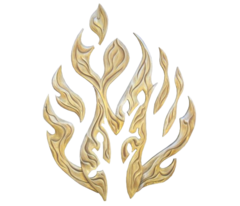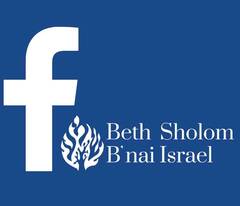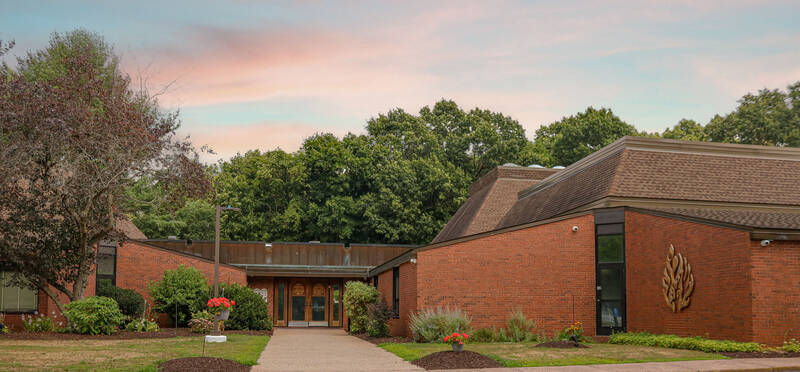Pesach 2: April 12, 2017
Hag Sameach.
There is a classic cartoon, by the cartoonist Wiley Miller of an old man sitting on a bench and a child sits down next to him and notices the numbers tattooed on his arm. “That is not a very interesting tattoo.” She says. The old man looks at his arm and says, “I got it when I was about your age and I keep it as a reminder.” “A reminder of happier days?” asks the child. “No, a reminder of a time when the world went mad.” And he then begins his tale of concentration camps, Nazi brutality, torture and degradation. The child sits and starts to cry upon hearing the story and finally says, “So you wear that tattoo so you can remember the dangers of political extremism?” “No,” says the old man, “I wear it so you will remember.”
For two nights now we have recalled the Exodus from Egypt, “Yetziat Mitzrayim.” Two words we should know very well. It is the founding story of our faith and the focus of our holiday cycle as well as the focus of our prayers. The journey from Mitzrayim to The Promised Land is the original tale of the journey of our people. Four fifths of the Bible are dedicated to the story of this journey and the fifth book is the story of where our people came from before they landed in Egypt.
Yetziat Mitzrayim is the focus of all the rituals of the Seder. The Matzah is the bread we baked in our haste to get out of Egypt. The maror is about the bitterness of slavery, Haroset is about the mortar used by the slaves to build the monuments of Egypt. The four cups of wine are about the four promises that God made to our ancestors that they would be liberated from Egypt. Parsley dipped in salt water is about the many spring times that were drowned in the tears of the slaves.
Our Seder is history brought alive through ritual. We not only remember Yetziat Mitzrayim, we can taste it, we can experience it through the many mitzvot that are connected to our Seder. Even at the end of the Seder, as we celebrate the freedom of our ancestors, we welcome Elijah into our homes, and we remember that just as God redeemed our ancestors, so too God can and will redeem us from oppression in our modern world.
The ancient Rabbis understood that a generation that is born in freedom could never imagine the pain and suffering of slavery so they invented this Seder ritual to not just remember the slavery, but to relive that time in history through the items on the Seder plate. The Haggadah is our guide to tell the story so that we fully understand that God saved our people from slavery and brought us to freedom with wondrous powers.
But the problem of ritual is that it depends on Kavanna, the intentions of those who are performing the ritual. If a ritual is done with the full knowledge of what it is supposed to mean, with awareness of the emotions it is designed to evoke then it has done its work well. But if a ritual is performed in a perfunctory manner, with no thought to what the symbols mean but just read in order to get through the story and start eating, then for all intents and purposes, the ritual is dead.
Look at the way we celebrate the Fourth of July, the day we Americans celebrate our freedom from the tyranny of Great Britain. There is no historical remembrance of George Washington, Benjamin Franklyn or Paul Revere. There is only some fireworks after a day of picnics and shopping. On Pesach, the days Judaism celebrates our national and religious freedom, we reenact that incredible night that ended with the liberation of our people. There are special foods, special prayers and the retelling of the story of slavery, plagues, freedom and the Red Sea.
While we can note that the Seder of Pesach is the ritual that is observed in some way in most Jewish households, the nature of that ritual varies considerably. Minimally, a vast number of Jewish homes have a family meal on Pesach night. Many fewer spend much time reading from a Haggadah. Even fewer families attempt to read through the Haggadah just to say that they read it. Symbolically there are many Jews who go through the Haggadah; far fewer Jews let the Haggadah go through them.
Furthermore, Pesach night is not the only time we remember Yetziat Mitzrayim. Every Friday night when we sing Mi Chamocha, we are remembering God who brought us out of Egypt. Each time we sing the Kiddush for Shabbat or holidays we recall Yeztiat Mitzayim. Every single morning, the last words we pray before going into our Amida is to remember how God saved our people from Egyptian slavery. Every time we recite the Shema, the last paragraph has us wear fringes on our garments not only to remember our obligation to mitzvot, but to also remember how God saved us and brought us out from enslavement in Egypt.
It is proper that we ask the question “why?” Why do we constantly remember the origins of our religion? Do we only remember this so that we appreciate where we came from? Is this just a ritual that we pay lip service to; our only reason to mention it is so we can get to the food that waits on the other side? Why is the Haggadah and the Siddur so insistent that we remember Yetziat Mitzrayim?
Rabbi Yehuda Leib Alter of Ger, the first Gerer Rebbe and the founder of the Gerer Hasidim in the mid nineteenth century, wrote in his book, Sefat Emet, “We see this especially on this holiday and in the telling of the tale, “so that you remember the days when you came out of Egypt all the days of our life.” (Deut. 16:3) “Remembering” means “mentioning” orally, the telling of this night give us the power to continue “telling the tale” all year long.”
Rabbi Arthur Green, commenting on the Gerer Rebbi adds this explanation: “Here the telling of the Exodus tale is uplifted from the realm of ritual to become, as in the Bible itself, a description of the sacred task of Israel throughout our lives. Each day, by our deeds as inspired by our words, we are to tell the world that God brought us slaves out of Egypt and that we have not forgotten!”
Remembering the story of Yetziat Mitzrayim is one part of the ritual. The second part of the ritual is to mention the story, to teach it to other Jews, to our children and to those who wish to learn about this sacred story. But there is a third part of the ritual; we must live our lives according to the story. We must live our lives each and every day as if we were the ones liberated from Egypt. We are the ones who had to learn how to live our lives in freedom. We are the ones who have to show through our actions our opposition to enslavement and our commitment to teaching others to value freedom as we value freedom.
How do we do this? WE have to support those who see to it that they have what they need to live as they rebuild their lives. One of the lessons from Yetziat Mitzrayim is that the way to freedom passes through the wilderness. It is not an easy transition and we have to do what we can to help others through the desert to their own promised land.
Another thing we can do is to help those we meet, who are struggling to make the transition, through our words and through our actions. We need to let them know that we understand the difficulties that they have encountered and that we may be able to lend them a hand in their efforts to move ahead. We don’t throw roadblocks in front of them through bigotry and resentment. We have to remain committed to providing opportunities to those who are in need. This is how we remember our own history. We know what it is like to be a stranger in a new land and we want to make that transition easier for those who will come after us.
We are the descendants of Israelite slaves in Egypt. We can change the way we dress, we can change the way we act, we can change the way we talk and we can change the way we live, but we can never change our history. As long as we remember who we are and where we came from, we can translate that history into a life of kindness, caring and compassion. This is the true legacy of Yetziyat Mitzrayim. To never forget who we are and where we came from. We are the witnesses to God’s redeeming power and we have paved the way for all the others who, following in our footsteps, wish to live in freedom.
May God bless all those who still seek freedom in our world as God has blessed us and may we never forget to share our blessings with all those who yearn to be free, as we say …. Amen and Hag Sameach.
Sermon given by Rabbi Randall Konigsburg at Beth Sholom B’nai Israel on Wednesday, April 12, 2017.




